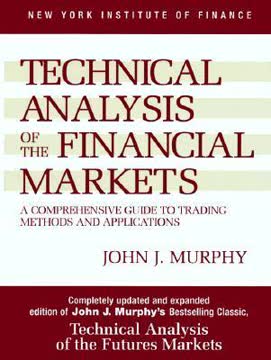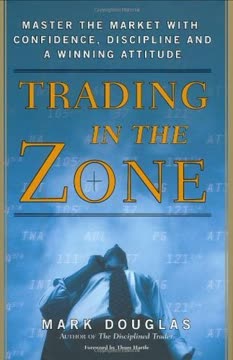Key Takeaways
1. Understand the forex market structure and key players
The forex market is one of the most manipulated, and it pays to know who is doing what, when, how and why!
Market participants. The forex market consists of five main groups:
- Market makers: Large banks like Deutsche Bank, UBS, and Citigroup that create the market prices
- Multinationals: Companies engaging in currency exchange for business purposes
- Speculators: Hedge funds, proprietary traders, and other risk-takers
- Central banks: Institutions managing monetary policy and currency stability
- Retail traders: Individual investors trading smaller amounts
Market dynamics. The forex market operates 24 hours a day, with trading sessions moving around the globe:
- Asian session: Dominated by the Japanese yen
- European session: Focus on euro and British pound
- US session: Emphasis on US dollar pairs
Understanding these dynamics helps traders identify optimal trading times and capitalize on market movements.
2. Master currency pairs and their characteristics
The problem for many forex traders is simply that the alternative options to buy or sell are almost limitless.
Major currency pairs. Focus on these seven pairs:
- EUR/USD: Most liquid pair, influenced by economic and political factors
- USD/JPY: Affected by risk sentiment and Bank of Japan interventions
- GBP/USD: Steady pair with less political influence
- AUD/USD, USD/CAD, NZD/USD: Commodity-driven currencies
- USD/CHF: Influenced by safe-haven demand and gold prices
Cross currency pairs. Consider trading these pairs for diversification:
- EUR/GBP, EUR/JPY, GBP/JPY: Offer unique trading opportunities
- AUD/JPY: Excellent barometer of risk appetite in the currency market
Understand each pair's characteristics, including volatility, liquidity, and correlation with economic factors, to make informed trading decisions.
3. Leverage volume price analysis for effective trading
Volume and price are both considered to be leading indicators. In other words, they lead the market.
Volume price analysis (VPA). This powerful technique combines volume and price data to predict future market movements:
- Volume confirms price action: High volume with strong price moves indicates a genuine trend
- Volume reveals market manipulation: Anomalies between volume and price can signal potential reversals
- Key VPA patterns:
- Hammer candles: Potential reversal signal after a downtrend
- Shooting star candles: Possible trend reversal after an uptrend
- Doji candles: Indicate market indecision and potential trend changes
Utilize VPA in conjunction with support and resistance levels, trend analysis, and other technical indicators for a comprehensive trading approach.
4. Develop a robust risk and money management strategy
Losing money is one thing, losing someone else's (either a friend's or the bank's), is something very different.
Risk management principles:
- Never risk more than 1-5% of your trading capital on a single trade
- Use proper position sizing based on your account size and risk tolerance
- Always use stop-loss orders to limit potential losses
- Never move a stop-loss in the opposite direction of your position
Money management strategies:
- Focus on consistent percentage returns rather than dollar amounts
- Start with micro or mini lots to build experience and confidence
- Gradually increase position sizes as your account grows
- Aim for a positive risk-reward ratio on your trades
Remember, successful trading is more about managing risk than chasing profits. Protect your capital at all costs, as it is your most valuable trading asset.
5. Craft a personalized trading plan tailored to your goals
Your trading plan is a living thing. Don't be afraid to make changes to it, to tailor it or adapt it, as your circumstances change and your knowledge grows.
Key components of a trading plan:
- Trading capital and risk tolerance
- Time commitment and preferred trading sessions
- Preferred currency pairs and timeframes
- Entry and exit criteria based on technical and fundamental analysis
- Risk and money management rules
- Trading psychology guidelines
- Record-keeping and performance evaluation methods
Customization factors:
- Personal circumstances (full-time job, family commitments)
- Trading style (scalping, day trading, swing trading, or position trading)
- Risk tolerance and financial goals
- Technical skills and market knowledge
Regularly review and update your trading plan as you gain experience and market conditions change. A well-crafted plan provides structure and discipline to your trading activities.
6. Manage trading psychology to overcome emotional pitfalls
Trading, when distilled down, is really a question of how well you can manage your mind.
Common emotional challenges:
- Fear of loss
- Fear of missing out (FOMO)
- Fear of losing profits
- Overconfidence after winning streaks
- Desperation after losing streaks
Psychological management techniques:
- Focus on pips rather than monetary values to reduce emotional attachment
- Implement a consistent pre-trade routine to maintain objectivity
- Keep a trading journal to identify and address emotional patterns
- Practice mindfulness and relaxation techniques to manage stress
- Set realistic expectations and accept that losses are part of trading
Remember that successful trading is more about managing your emotions than predicting market movements. Develop mental resilience and discipline to execute your trading plan consistently.
7. Choose the right broker and optimize your trading setup
Few forex traders ever understand what the broker does, or why, and then complain when things go wrong.
Broker selection criteria:
- Regulatory compliance and financial stability
- Competitive spreads and commission structures
- Execution quality and order types offered
- Platform features and ease of use
- Customer support and educational resources
Trading platform setup:
- Use multiple timeframes for comprehensive market analysis
- Implement a currency strength indicator for quick market overview
- Utilize volume indicators for effective VPA
- Include support and resistance levels on your charts
- Consider adding other relevant technical indicators based on your strategy
Regularly evaluate your broker's performance and be prepared to switch if necessary. Optimize your trading setup to align with your strategy and maximize efficiency.
8. Implement effective entry, management, and exit strategies
Remember, it [the market] is designed to fool most of the people most of the time.
Entry strategies:
- Use multiple timeframe analysis to confirm trend direction
- Look for high-probability setups based on your trading plan
- Consider fundamentals and market sentiment alongside technical analysis
Position management:
- Use trailing stops to protect profits as the trade moves in your favor
- Scale in or out of positions to manage risk and maximize returns
- Regularly reassess the trade based on new market information
Exit strategies:
- Set clear profit targets based on support/resistance levels or risk-reward ratios
- Use time-based exits for trades that fail to perform within a specific timeframe
- Implement partial profit-taking to secure gains while allowing for further upside
Always have a clear plan for entering, managing, and exiting trades before opening a position. Adapt your strategies based on market conditions and your evolving trading skills.
Last updated:
FAQ
What's Forex For Beginners by Anna Coulling about?
- Comprehensive Guide: Forex For Beginners is a detailed introduction to forex trading, aimed at novices. It covers everything from market basics to advanced trading strategies.
- Step-by-Step Learning: The book guides readers from having no forex knowledge to placing their first trade, with clear explanations and examples.
- Volume Price Analysis Focus: A significant portion is dedicated to Volume Price Analysis (VPA), a method for understanding market movements.
Why should I read Forex For Beginners by Anna Coulling?
- Beginner-Friendly: The book simplifies complex forex concepts, making them accessible to new traders.
- Real-World Examples: It includes numerous examples and charts to help readers visualize and understand the material.
- Expert Insights: Coulling shares her extensive trading experience, offering insights to avoid common pitfalls.
What are the key takeaways of Forex For Beginners by Anna Coulling?
- Market Mechanics: Readers learn how the forex market operates, including the roles of major participants like market makers and central banks.
- Risk Management: The book emphasizes the importance of protecting trading capital and making informed decisions.
- Volume Price Analysis: VPA is introduced as a powerful tool for forecasting market movements and making trading decisions.
What is Volume Price Analysis (VPA) in Forex For Beginners by Anna Coulling?
- Definition: VPA combines price movements with trading volume to assess market strength and predict future price action.
- Price and Volume Relationship: It focuses on whether price movements are supported by corresponding volume, indicating market strength or weakness.
- Practical Application: The book provides examples of using VPA to make informed trading decisions.
How does Forex For Beginners by Anna Coulling explain risk management?
- Key Principles: Successful trading requires understanding and managing risk effectively, using only money you can afford to lose.
- Position Sizing: The book discusses calculating potential losses and setting appropriate stop-loss orders.
- Emotional Control: Coulling highlights the importance of managing emotions to make rational trading decisions.
What are the different trading approaches discussed in Forex For Beginners by Anna Coulling?
- Fundamental Analysis: Focuses on economic indicators and news releases that impact currency values.
- Technical Analysis: Uses tools like Japanese candlestick patterns to interpret price action.
- Relational Analysis: Considers relationships between different markets and currencies for a comprehensive view.
What are the best quotes from Forex For Beginners by Anna Coulling and what do they mean?
- "The market is designed to fool most of the people most of the time.": Highlights the deceptive nature of the forex market.
- "If you could distill the essence of successful forex traders, much of that success could be traced back here.": Emphasizes the importance of risk management.
- "Where there is panic, there is also opportunity.": Encourages traders to find opportunities during market volatility.
How does Forex For Beginners by Anna Coulling address the importance of choosing a broker?
- Understanding Broker Types: Explains different types of forex brokers and their roles in the market.
- Avoiding Conflicts of Interest: Discusses potential conflicts with brokers who may trade against clients.
- Evaluating Broker Reliability: Encourages considering factors like regulation and customer service when selecting a broker.
What is the significance of support and resistance in Forex For Beginners by Anna Coulling?
- Definition: Support is a price level preventing further decline, while resistance prevents further rise.
- Market Behavior: Markets often move in phases, spending time in congestion before breaking out.
- Trading Opportunities: Breakouts from support and resistance levels present excellent trading opportunities.
How does Forex For Beginners by Anna Coulling help with understanding currency quotes?
- Currency Pair Basics: Explains that currency pairs are quoted in relation to one another, with the first currency as the base.
- Understanding Pips: Clarifies how pips are calculated and their significance in trading.
- Bid and Ask Prices: Discusses the bid and ask prices in currency quotes and the broker's profit spread.
What is the importance of risk management in forex trading according to Forex For Beginners by Anna Coulling?
- Protecting Trading Capital: Emphasizes that trading capital is "your most precious asset."
- Mathematical Impact of Losses: Explains how losses compound, making recovery difficult.
- Emotional Stability: Effective risk management helps maintain emotional control.
How do I create a trading plan according to Forex For Beginners by Anna Coulling?
- Personalization is Key: Your trading plan should reflect your personal circumstances and goals.
- Include Risk Management Rules: Set clear rules for capital risk on each trade, suggesting a maximum of 1% to 5%.
- Adaptability: Your plan should evolve with your knowledge and experience.
Review Summary
Forex for Beginners receives mostly positive reviews, with readers praising its clarity and comprehensive introduction to forex trading. Many find it helpful for beginners, appreciating the explanation of terminology and basic concepts. Some criticize repetitions and typos, while others note the strategy can be convoluted. Readers value the practical advice and insights into trading platforms. Overall, it's considered a solid starting point for those interested in forex trading, though some suggest supplementing it with additional resources.
Similar Books










Download PDF
Download EPUB
.epub digital book format is ideal for reading ebooks on phones, tablets, and e-readers.






